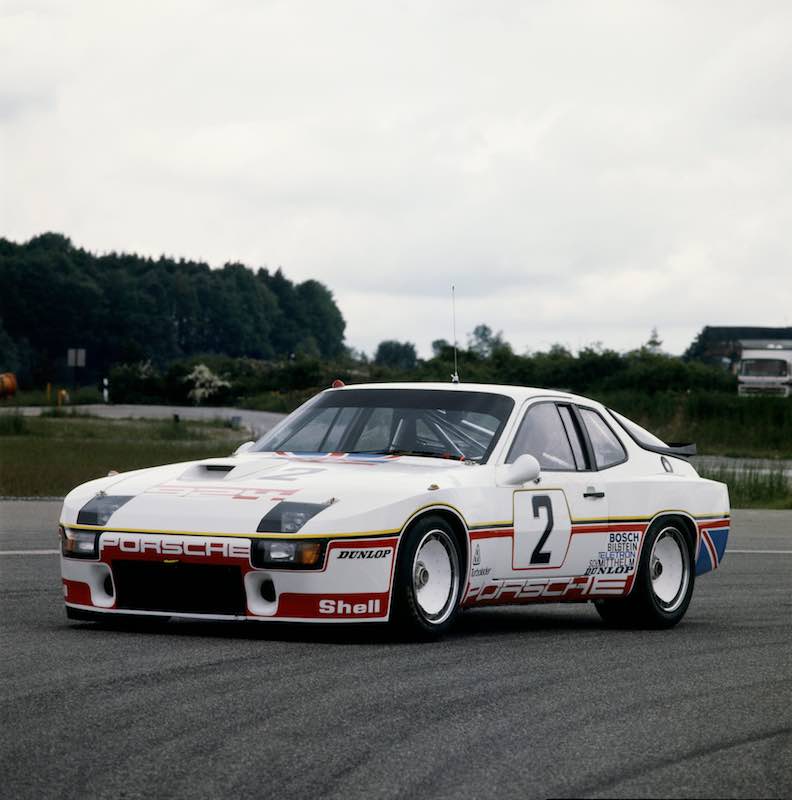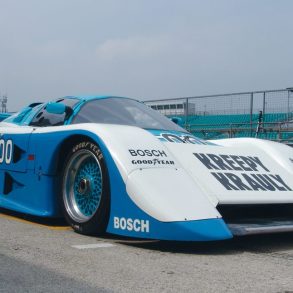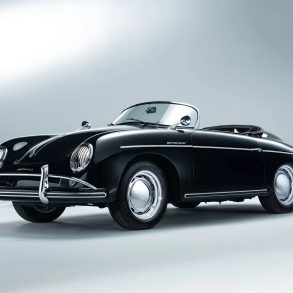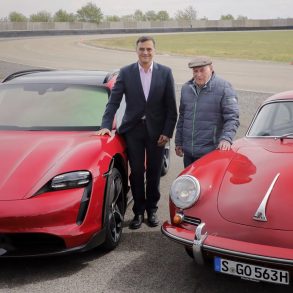You probably won’t see the likes of Bentley or Bugatti aiming to cover a broader client spectrum in order to boost sales. However, there was a time when Porsche did exactly this – the luxury sports car brand went for an ‘economical’ sports car that would appeal to the masses- the Porsche 924. This would be the car that would get them through a time when their finances were light on. Hoping to get everything set straight up with the assistance of Volkswagen, things took an unexpected turn.
Fortunately, not everything was gloomy for Porsche. After a lot of struggle, design mistakes and a lot of parts sourced from other cars, the Porsche 924 came to fruition.
The need for an Affordable Porsche
During the 1960s, the piggy bank wasn’t looking particularly well for Porsche. Looking to boost sales and shore up the finances, a joint project was started alongside Volkswagen.
Named Vetriebsgesellschaft (VG), the collaboration carried the name of the marketing company built together by the two automakers. Initially dubbed “Project 425” Porsche wanted to use the new model as a replacement for the 914 while Volkswagen expected to make a new flagship coupe out of the deal.
The deal stated that the new car was to be built by Volkswagen technicians while Porsche assisted. Since the car was to be relatively cheap to manufacture, it was clearly a profitable, easy to fund project for Porsche company.
As the early 70s came around there were a number of events that popped up that inevitably caused Volkswagon to pull out of the deal with Porsche, leaving Porsche to deal with the aftermath. These included the 1973 oil embargo, new imposed automotive regulations and a change in the upper management at Volkswagon to name a few.
Since the Porsche 914 model was on its way out and Porsche no longer had a sub entry 911 model, Porsche desperately needed a replacement model. Given the amount of investment the company had already put into the project, Porsche struck a deal with Volkswagen to buy over the design for 125 million dollars. Was it a success? Well between 1976 and 1985, Porcshe built over 170,000 units and was able to keep the financial ship sturdy during this time.
The 924 Hero
While Porsche purists hiss at the name of Porsche 924, some even calling it a poor man’s car, for many automotive enthusiasts, the model sits as an unsung hero of the brand.
The car was indeed a mashup of Volkswagen, Audi and Porsche parts, but it did save the brand in the 70s, allowing it to fund the more powerful, better designed, and exponentially more expensive models.
The Porsche 924 was ahead of its time in the 70s. Dutch designer Haam Lagaay, member of the Porsche design team designed a 2-door coupe bodywork that managed to mix utility and a healthy dose of agility. One would be able to enjoy the car around the bends on a Sunday then take the kids to school on the following Monday without anyone batting an eye.
A four-speed transaxle RWD drivetrain was paired with a VW/Audi sourced 2-liter engine. A lot of people attribute the EA831 engine to the Volkswagen LT. However, at the time Porsche was building the 924, the engine was solely found on the Audi 100, and only, later on, went to be used on Volkswagen’s minivan.
The original engine came on board with a Bosch K-Jetronic injection system, allowing it to push 95hp towards the wheels.
As 1977 hit, power was boosted to 110hp for the US market, as catalytic converters removed the need of power-hungry smog equipment.
Since the European market did not yet have any emission requirements at the time, Porsche was able to squeeze 123hp out of the 924 engine and reduced the weight by stripping the unneeded US-style low impact bumpers on the front and rear of the car.
It took 6.9 seconds for the Porsche 924 to reach 62 mph and had decent stopping power thanks to disc brakes on the front axle.
It was an absolute success, with 5145 units being sold in the first year from launch, then 5 times more the next year.
Porsche 924 Turbo
Porsche executives were rather hit in the face with the success of the 924, and quickly realized the need for a more powerful, sportier version. This would also bridge the gap created between the standard 924 and the hi-spec Porsche 911.
Since Porsche was very familiar with turbocharged power units thanks to several race cars and the iconic 911 Turbo, engineers took the same EA831 engine, switched the cylinder head, lowered the compression ratio to 7.5:1 and mounted a K-26 turbocharger ready to blow 10psi of boost.
Thanks to the upgraded power unit, the Porsche 924 would have an output of 124hp at 5,500rpm and 181 lb*ft of torque at 3,500rpm.

On the other hand, since the addition of the turbocharger increased the weight by about 65lbs, the suspension had to be revised. Spring rates and roll bars were given a tune-up and as a side result, weight distribution was now 51/49, even better than the former 52/48 of the classic Porsche 924.
It was clear that Porsche 924 Turbo needed to be different from its predecessor not just performance-wise but also by visual cues.
The 924 Turbo came with a NACA duct on the right side of the hood plus four air intake vents beneath the badge.
The wheels were upgraded to 15” alloy and brake discs were added to the rear axle. The most important change, however, besides the turbocharged engine, was the 5-speed manual transmission which would push the car up to 140mph. Incredibly, the car could reach 62mph in just 7 seconds.
In 1981, Porsche revised the 924 Turbo model to fix turbo-related problems. For the most part, cooling the turbocharger solely by engine oil caused reliability problems, although performance was getting dangerously close to the more expensive 911 SC. Alongside fixing turbo issues, Porsche also revised the injection system and pushed compression ratio up to 8:1, thus the engine would now generate 177hp.
Porsche 924 Carrera GT
During the 1979 Frankfurt Auto Show, Porsche showcased a pearl-white 924 concept featuring Carrera badges. A year later the 924 Carrera GT was released, Porsche making it clear that the fate of the 924 turned towards competition and not just a budget Porsche. Just remember, the “Carrera’ badge was reserved for the hi-performance models and not even provided for the 911.
The concept provided a very clear picture of what the production version would look like, as the only major change between the concept and production was the boxier bonnet intake. Oh, and neither the tomato-red interior made it into production – a sad or awesome thing, depending on who you’d ask.
However, the shocker came afterwards: with a decade of success in the 24hour race under its belt, Porsche was about to race the 924 Carrera GT at LeMans.
To do so, Porsche had to build 400 examples of the car. Performance-wise, power was boosted to 207bhp thanks to an intercooler fed through the boxier scoop. Compression ratio was raised, and digital ignition was integrated for the first time in a Porsche. Metal arch extensions were replaced by fiberglass and ride height was dropped by 10mm at the front and 15mm at the rear.

A limited-production Porsche Carrera 924 GTS was released in 1981 and all 59 models were pre-sold. Compared to the “standard” GT, the GTS was pumped up! More boost (1 bar vs 0.75bar on the GT), 130lbs lighter and pushing out 242hp. There was also a fully revised suspension beneath the frame which improved dynamic performance, making it suitable for the cruel track of “de la Sartre”.
The 924 Carrera GT competed at Le Mans in the 1980 GTP class. The best car in the pack finished sixth overall, which wasn’t outstanding by Porsche standards but nevertheless an amazing result for something that started as a low-budget car packed with VW sourced parts.
Porsche 924 GTR
Peak development of the 924 was reached with the GTR race car. Porsche assembled an intensively modified and optimized version of the VW-source inline-4, 2-litre engine used in all 924s. It could push 375hp at 6,500 rpm and 299lb-ft of torque at 5,600rpm, thanks to an almost equal bore and stroke size and a compression ratio that was dropped to 7:1.



The intercooler was enlarged compared to the GT model and increasing the front fascia to create room. The large air dam and hungry air scoops on the hood give not-so-subtle hints about what lies beneath: a monster. The 924 GTR was the only trim in the series to feature a rollcage.
To handle all the extra power, Porsche 924 GTR was fitted with huge (12.2 inch) ventilated front brake discs and Porsche 935 calipers. A fully adjustable independent front suspension would let mechanics tune the finest settings to better tackle sharp turns on the circuit.
If some comfort was retained on the GT and GTS trims via upholstery or seating, the GTR is all business. A MOMO racing wheel sits in from of two racing seats, while the dash has been stripped down to the bare minimum. Just a few buttons, HVAC vents and six gauges measuring speed, RPMs, oil and coolant temperature and turbo pressure. Another odd factor is the handbrake lever, placed on the left side of the drive, just beneath the horizontal rollcage tubing that goes from A-pillar to C-pillar. No window crank, a very basic pull handle and industrial-like carpeting just so you don’t sit directly on the bare metal. That’s pure racing DNA.
Given its reduced weight (2,050 lbs), the 924 GTR was able to reach 60mph in just 4.7 seconds and push through the limiter at 180mph.
As 1980 was coming to an end, Porsche CEO Dr Ernst Furhmann, the man who kickstarted the amped-up versions of the 924 stepped down and Peter Schutz took his place. The first act Schutz took was to save the 911 from falling into the hole of time, as it was programmed to be retired in 1980 (it became difficult to meet increased emission standards). However, he also saw the potential of an entry-level model, through the likes of the Porsche 924 and thus continued the project.
The feel of the 924
It’s clear that the 924 does not receive the respect it truly deserves, not just for saving the brand during the OPEC embargo and keeping business afloat, but also by not respecting its performance factors.
Like with literally any Porsche, the 924 is fully capable of putting a smile on your face, regardless of the trim. Of course, you may enjoy the GTR more than the base 924, but chances are you won’t find the former too easy, with just 49 units built.
There is an almost 50-50 weight distribution, thanks to its transaxle (which basically means the gearbox is under the boot floor) balancing out the weight of the engine. It won’t compare in terms of speed with the more powerful air-cooled units Porsche added to the 911, nor it will share the fluid design lines of the 944 or 968. However, the 924 featured a turbo that was well ahead of its time. In its first iteration (Series 1), the turbocharged EA831 kicks in on the higher end of the RPM, while on the second iteration (Series 2) boost is shared over a wider rpm range.
Since there’s no power steering, you will often fight the steering wheel, especially on slow corners, or even more while parking. Your forearms will get a good workout out of any prolonged track session inside the Porsche 924, yet nevertheless, the joy you will feel will drown the aching muscles.
As soon as you look away from disgusted faces of purists and don’t consider the price, you get to realize that the Porsche 924 is an authentic sportscar. And while it may be cheaper than the 911, it was still worth a pretty penny during its days.
The Future of the Porsche 924
Without a shred of doubt, Porsche 924 will become a collector’s item sometime in the future. While it may not rack as much in an auction as a 911 from the same period, Porsche 924 holds more history than many of its brand’s counterparts. Its critical influence on the life of Porsche brand, the unexpectedly low price for a Porsche and its racing heritage packed into a 4-door coupe make the 924 a desirable choice for enthusiasts around the world. Getting one while they’re still rather cheap could be the best investment one made in a while.















Great article on a little known Porsche with a great and significant history of the factory’s survival in hard times.
Great article about the 924, you explained everything in great detail and accuracy !
My very first Porsche back in 1985 was a used 1977 924 (first year for the US) and that very basic and under powered, but otherwise great handling and very forgiving car really taught how better my driving at the limit !
That little 924 really opened the door for me to get in to racing (ever since) many other Porsches in the PCA and other car clubs !
Thanks for taking the time and writing a great and well deserved on a “UNSUNG HERO” in the long line of all the different awesome cars that Porsche has offered the world for decades !
Best,
E. Fariab
Thank you very much for presenting this data about Porsche 924, it’s known how to get approved but what are the next steps after getting the approval. Wonderful information, thanks a lot for sharing kind of content with us, great post!